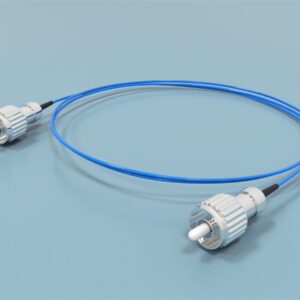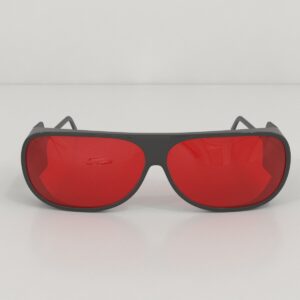$1,790.00
The zebrafish plus maze, designed in a “+” shape, features four end compartments and a central compartment. This setup is utilized to study associative learning behavior in zebrafish.
This maze is similar to the non-spatial variant of the Radial arm maze commonly employed with rodents.
During testing, zebrafish are evaluated on their capacity to link visual cues with rewarding unconditioned stimuli as they navigate the maze.
Mazeengineers provides the Zebrafish Plus Maze, adaptable for use with both mice and rats. Custom coloring and additional modifications can be arranged upon request.

MazeEngineers empowers preclinical neuroscience research with meticulously designed, customizable behavioral apparatuses. From manual classic mazes to fully automated smart systems, we provide the tools scientists need to capture high-quality, reproducible data for studies on learning, memory, anxiety, and depression.



Features |
Height of maze: 10cm |
Length of end compartments: 35cm |
Width of end compartments: 25cm |
Length of stimulus tank: 20cm |
Width of stimulus tank: 3cm |
Depth of stimulus tank: 3cm |
Width of start box: 10cm |
Height of start box: 10cm |

The Zebrafish Plus Maze is a tool for studying associative learning behavior in zebrafish. It tests the subjects’ ability to link visual cues with rewarding unconditioned stimuli while navigating the maze. This apparatus is akin to the non-spatial version of the Radial arm maze used for rodent studies. The plus maze is instrumental in researching the mechanisms and chemicals involved in the acquisition, consolidation, and retrieval of learned information.
Learning and memory are regulated by intricate neurobiological processes and brain structures. Researchers study drugs that can impair human learning ability to understand their pharmacological effects on animal models. The zebrafish serves as a standard model for investigating the processes and disruptions in learning behavior. The zebrafish plus maze is valuable for analyzing the synaptic and molecular mechanisms essential for forming associative learning.
The maze itself has a plus shape with five compartments and includes stimulus tanks for unconditioned stimuli. The sight of conspecific zebrafish from these tanks provides non-satiating reinforcement, enhancing the subjects’ performance. Other tools for assessing learning and memory in zebrafish include the Zebrafish Associative Learning apparatus, the Zebrafish T Maze, and the Zebrafish 3 Chamber Choice.
The zebrafish plus maze is designed in a “+” shape with four end compartments and a central compartment. Standing 10 cm tall, the maze is constructed from transparent acrylic. Each end compartment measures 35 x 25 cm. Stimulus tanks are attached to each compartment, each tank measuring 20 cm in length, 10 cm in width, and 10 cm in depth. These tanks have three opaque sides (one red and three white), making the stimuli visible only when the subject enters the respective end compartment. The central compartment includes a removable start box, which measures 10 x 10 cm.
Place the fish in the plus maze for a 2-hour acclimatization period. During this habituation phase, ensure no stimuli are present in the maze. Repeat this habituation process for a minimum of 4 days.
Position the zebrafish conspecifics in the red stimulus tank located in the target compartment. Leave the stimulus tanks in the other three compartments empty. Introduce one subject at a time into the start box. After a 30-second acclimation period, lift the start box, allowing the fish to explore the maze for 5 minutes. Conduct a minimum of 4 trials per day, with a 2-minute interval between each trial. Repeat this process for at least 4 sessions over 4 days.
For the probe trial, do not include zebrafish conspecifics in any of the stimulus compartments. Position the experimental fish in the start box. After a 30-second acclimation period, lift the box and observe the fish’s behavior for 5 minutes.
Sison and Gerlai (2011) examined the impact of MK-801 on zebrafish learning capabilities using the Zebrafish Plus Maze. The study involved seven groups: six experimental groups and one control group. The experimental groups were exposed to MK-801 at a concentration of 20 µM at three different times: before the initial training session, after the final training session, and immediately prior to the probe trial. The control group, which received 0 µM MK-801, was exposed separately to the red stimulus tank (conditioned stimulus, CS) and zebrafish conspecifics (unconditioned stimulus, US). The findings revealed that MK-801 impaired memory performance in subjects after training. No memory disruption was observed when the drug was administered before training. Control fish exposed to the CS-US pairing spent 25-30% of their time in the target compartment, while those not exposed to the pairing spent only 8% of their time there. Administration of 20 µM MK-801 significantly impaired memory, as indicated by the reduced percentage of time spent in the target compartment following training trials.
Following parameters can be observed by using zebrafish plus maze
The zebrafish plus maze is an uncomplicated apparatus that yields consistent results for associative learning experiments. Utilizing zebrafish conspecifics as stimuli provides a non-satiating reinforcement, unlike food rewards. The opaque walls of the stimulus chambers ensure that the stimuli are visible only when the subject fully enters the chamber, preventing the stimuli from influencing the task before it begins. Moreover, the colors of the stimulus tank walls serve as visual cues. The apparatus is highly adaptable and can be easily customized to suit various research requirements.
The zebrafish plus maze task is labor-intensive and time-consuming. The scalability of the apparatus is also low as it requires continuous experimenter intervention during the trial. Cleaning of the apparatus is important to prevent chances of lingering olfactory cues from affecting the fish performances. Careful handling of subjects is required since mishandling may induce stress in the subjects. External disturbances such as olfactory and visual cues can impact task performances. Factors such as the age, gender and the subjects exploratory drive can also affect performance.
Sison, M., & Gerlai, R. (2011). Associative learning performance is impaired in zebrafish (Danio rerio) by the NMDA-R antagonist MK-801. Neurobiology of Learning and Memory, 96(2), 230-237. doi:10.1016/j.nlm.2011.04.016
There are no questions yet. Be the first to ask a question about this product.